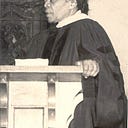History 101: The 3 B’s
In this series, History 101, we’ll explore some of the topics and questions we frequently discuss at the Charlotte Hawkins Brown Museum.
Three B’s of Education
School founders Mary McLeod Bethune, Nannie Helen Burroughs, and Charlotte Hawkins Brown lived and worked in a shared historical framework and sense of mission. All were born in the later part of the nineteenth century in the post-Reconstruction South. Each woman dedicated their lives to the uplift and education of African American youth and correspondence over time shows their support of one another. The three women, Bethune, Burroughs, and Brown were nicknamed the “Three B’s of Education.”
Mary McLeod Bethune
Born in Mayesville, South Carolina in 1875 to parents that had been enslaved, Mary McLeod Bethune took an early interest in education. She eventually started a school for African American girls in 1904 in Daytona Beach, Florida. It later merged with a private institute for African American boys and became known as the Bethune-Cookman School. Bethune’s contributions to the Black community were not limited to her school, Bethune also founded the National Council for Negro Women in 1935 and was a leader for several Black Women’s clubs. She was appointed as an advisor to President Franklin D. Roosevelt and helped to create the Federal Council on Negro Affairs, also known as the Black Cabinet.
Excerpt from Bethune’s Final Will and Testament:
I LEAVE YOU FINALLY A RESPONSIBILITY TO OUR YOUNG PEOPLE. The world around us really belongs to youth, for youth will take over its future management. Our children must never lose their zeal for building a better world. They must not be discouraged from aspiring toward greatness, for they are to be the leaders of tomorrow. Nor must they forget that the masses of our people are still underprivileged, ill-housed, impoverished and victimized by discrimination. We have a powerful potential in our youth, and we must have the courage to change old ideas and practices so that we may direct their power toward good ends.
Nannie Helen Burroughs
Nannie Helen Burroughs was born to a formerly enslaved couple in Orange, Virginia in 1879. Burroughs excelled in school and graduated with honors from M Street High School (now Paul Laurence Dunbar High School). Despite her academic achievements, Burroughs was turned down for a Washington D.C. public school teaching position. Undeterred, Burroughs decided to open her own school to educate and train poor, working African American women. Burroughs opened the National Training School for Women and Girls in Washington, DC in 1909 — the emphasis of the school was “the three B’s: The Bible, the bath, and the broom.” In addition to founding the National Training School for Women and Girls, Burroughs also advocated for greater civil rights for African Americans and women. At the time, Black women had few career choices. Many did domestic work like cooking and cleaning. Burroughs believed women should have the opportunity to receive an education and job training. She wrote about the need for Black and White women to work together to achieve the right to vote during the Suffrage Movement. She believed suffrage (the right to vote) for African American women was crucial to protect their interests in an often-discriminatory society.
She was quoted as saying, “to struggle and battle and overcome and absolutely defeat every force designed against us is the only way to achieve.”
Dr. Charlotte Hawkins Brown
Charlotte Hawkins Brown was born in Henderson, North Carolina in 1883 to Caroline Frances. After moving North with her family, Brown received a public school education in Cambridge, Massachusetts. After one year of college, Brown was hired to work at the Bethany Institute, a rural school for African American children run by the American Missionary Association, in Sedalia, North Carolina. When the American Missionary Association decided to close the school a year later, Brown decided to create a school of her own in 1902. Starting in a small blacksmith’s shop, Brown continued raising money, eventually obtaining 200 acres and constructing new buildings for her campus. The school was named the Palmer Memorial Institute in honor of mentor Alice Freeman Palmer. It was a day and boarding school for African American youth. Palmer Memorial Institute served as one of the only schools in North Carolina to offer college preparatory programs. Just as Bethune and Burroughs, Brown had her own educational philosophy that had some basis in religion. The school’s legacy also lives on through generations of students and graduates who have been influenced by Palmer’s philosophy: “Educate the individual to live in the greater world.”
For more, visit our website.
